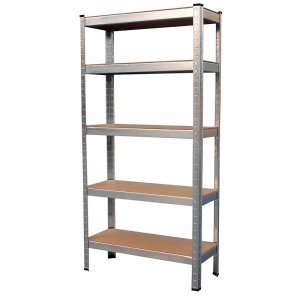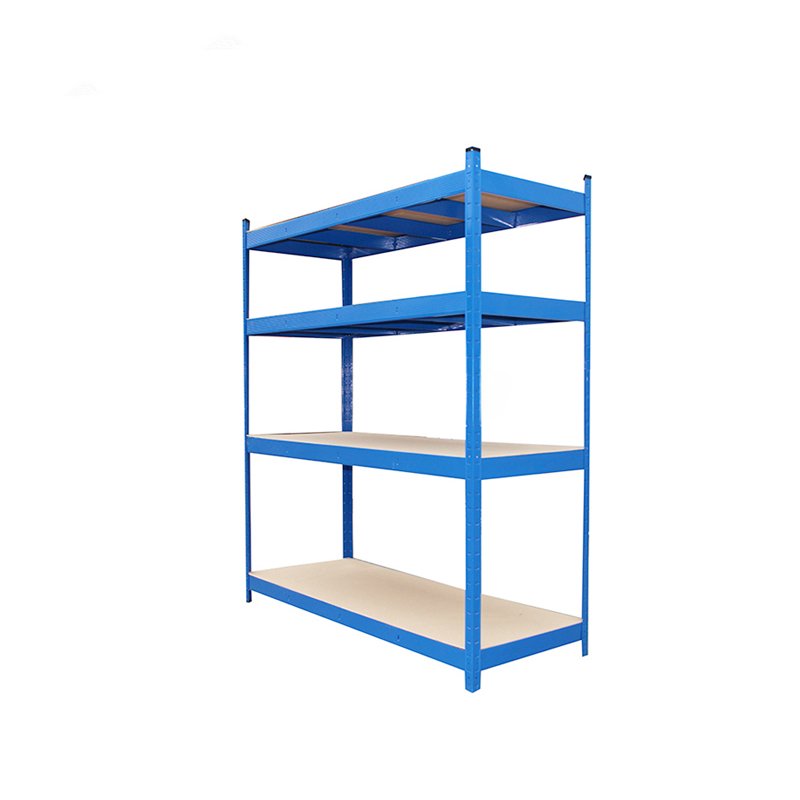- All
- Product Name
- Product Keyword
- Product Model
- Product Summary
- Product Description
- Multi Field Search
Please Choose Your Language
Views: 193 Author: Site Editor Publish Time: 2025-05-21 Origin: Site









When it comes to optimizing industrial storage solutions, the debate between shelving racks and cabinets is ongoing. Both offer unique strengths, but how do they really compare in terms of efficiency, accessibility, space usage, and cost-effectiveness? In this in-depth guide, we break down the differences to help you determine which system suits your industrial needs best.
Before diving into the comparison, it’s important to clarify what we mean by shelving racks and cabinets in the industrial world.
Shelving racks are open-frame structures made of metal or heavy-duty plastic, designed to hold materials, tools, and supplies. They come in various sizes, configurations, and load capacities. Their open design allows for easy access, ventilation, and quick inventory visibility.
Industrial cabinets, on the other hand, are enclosed units with doors—sometimes lockable—used for storing items securely. They are often made of steel and include internal shelves or drawers. Cabinets offer protection from dust, theft, or environmental conditions.
Shelving racks have an open structure, which means items can be accessed from the front or sides. This allows for higher vertical stacking and denser arrangements, making them ideal for warehouses with limited floor space. They can be configured in rows or aisles, maximizing cubic storage capacity.
Cabinets, due to their enclosed nature, often require additional clearance for doors to open fully. This limits how closely they can be placed next to each other. The internal space of cabinets may also be underutilized because of fixed shelves or drawer partitions.
| Feature | Shelving Racks | Cabinets |
|---|---|---|
| Floor Space Usage | High Efficiency | Medium Efficiency |
| Accessibility Angle | 180°-360° (open sides) | 90° (front-only) |
| Vertical Storage | Easy to expand upwards | Limited by door design |
| Clearance Requirement | Minimal | Moderate to high |
In most industrial facilities where square footage is at a premium, shelving racks provide better overall space utilization.

When workers need to access tools or parts quickly, shelving racks offer superior visibility and reachability. There’s no need to open or close doors—just grab and go. This can reduce average picking times by up to 30%, especially in fast-paced environments like logistics or assembly lines.
Cabinets offer secure storage, which is valuable for high-cost tools or sensitive equipment. However, the need to unlock and open doors, and sometimes drawers, slows down access. In operations where speed matters more than protection, cabinets can bottleneck productivity.
From an efficiency standpoint, shelving racks significantly enhance workflow speed.
Industrial-grade shelving racks can support thousands of pounds per shelf when made from materials like stainless steel or powder-coated iron. Some types—such as pallet racks or cantilever racks—are designed for heavy and oversized items. They can withstand constant loading and unloading with minimal wear.
Cabinets are generally strong, especially when constructed from thick-gauge steel. However, the enclosed structure can make them more susceptible to warping under uneven load distribution. Also, the fixed dimensions of drawers or inner compartments can limit flexibility when storing irregular items.
If your operations require storing bulky, heavy items, shelving racks are more adaptable and structurally capable.
Shelving racks tend to be more affordable upfront. Basic configurations can be installed quickly without the need for complex assembly or custom fittings. For startups or expanding operations, this lower cost of entry is a big plus.
Cabinets, especially high-security or fireproof ones, are significantly more expensive. They also often require professional installation.
Racks are relatively low-maintenance—rust-resistant coatings and modular parts allow easy replacement. Cabinets may need frequent hinge or lock repairs, and replacement parts can be costly.
Over a five-year lifecycle, shelving racks typically offer a better return on investment (ROI), especially in large-scale operations.

Industries evolve, and so do storage needs. Shelving racks can be reconfigured, extended, or relocated easily. Need to add a new row? Just slot it in. Want to change shelf height? No problem.
Cabinets are more rigid. Once placed, they’re rarely moved. Their internal structure offers limited reconfiguration options, which can be a drawback for dynamic operations.
In industries that thrive on flexibility—such as e-commerce, manufacturing, or auto repair—modular shelving racks outperform static cabinet systems.
Yes, but they should be placed in supervised or restricted zones. For extra security, use mesh-backed racks or wire cages.
Yes, if made from stainless steel or coated with anti-bacterial finishes. They are widely used in pharmaceutical and food processing industries.
It depends on usage, but generally, shelving racks made from high-quality materials last longer with lower maintenance needs.
Yes. Cabinets, especially those made with fireproof linings, offer better protection in case of fire. Shelving racks are more exposed and should be placed strategically.
Absolutely. Many industries use a hybrid setup—shelving racks for general tools and cabinets for sensitive or expensive equipment.
So, shelving racks or cabinets?
If your priority is speed, accessibility, flexibility, and cost-efficiency, shelving racks are the better choice. They’re ideal for industries that demand fast-paced operations and constant inventory changes.
However, if your focus is security, environmental protection, and item confidentiality, cabinets have a clear edge.
Ultimately, the best storage system depends on your operational goals, available space, and types of materials stored. In many cases, combining both solutions can offer the best of both worlds.